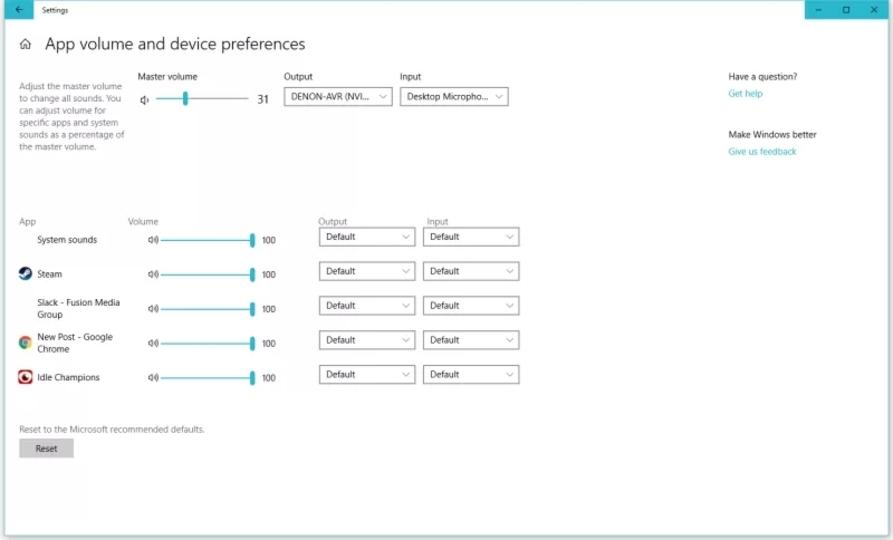In the latest Windows 10, you can s...
26
03
In the latest Windows 10, you can select "speakers" or "headphones" for each application
For some people, one set of speakers and headphones is enough for a desktop or laptop. On the other hand, people who use different speakers depending on the situation such as "listening to music", "playing games", "watching movies", etc. are always forced to struggle with Windows.
I use a 5.1 surround system for basically everything (except late nights). If your roommate is watching a loud movie in the living room, use noise-cancelling headphones.
Windows 10 makes it super easy to switch between audio devices. Just left-click the icon in the taskbar and select New Playback Device from the (drop-up?) menu.
But there are ways to control your audio devices even more. It's a new feature added in Windows 10 "April 2018 Update".
Windows 10 audio customization is awesome
Right-click the audio icon in the taskbar and select Open Sound Settings. In the window that appears, scroll down and click "App volume and device preferences" under "Other sound options."

The App Volume and Device Preferences screen is new to Windows 10 and allows you to customize sound and speaker settings for each app. First, assign your 5.1ch system, for example, as the default speaker in Windows. Also set a default volume. You can raise or lower it by adjusting the volume on your keyboard or within the OS.
At the bottom of the screen, you'll see a list of currently running apps. Now let's set the volume for each. Specified as a percentage of the system default volume. In other words, "100" is just 100% of the normal system volume, so it won't hurt your ears. If set to 50, the app will play at half its normal volume.
Unfortunately, when you set per-app volume, there is no beep to let you know what the volume of that app will be. I guess you just have to use your imagination.
Headphones? Or speaker?
The real fun in Windows 10's "App Volume & Device Preferences" is in the output dropdown menu. Not only can you customize the volume of each app, but you can also specify the output destination.
For example, if you always use a headset when playing Fortnite, you can specify the sound output for that game to your headset. If you want to fill the room when listening to Spotify, opt for crazy Dolby Atmos over poor monitor speakers.
After selecting, you may need to restart the app or game for the settings to take effect. In some cases, nothing changes. In my case, I wanted to set my Steam and Battle.net games to my headphones, but to no avail. But watching videos in Chrome, Window 10 apps from Spotify and Netflix, and Fornite (via Epic Games' launcher) worked just fine.
In other words, the Windows implementation isn't perfect, as it doesn't work well with some third-party apps. Still, it's a lot more convenient than having to manually switch between speakers every time.
Image: Tyler Nix/Unsplash
David Murphy - Lifehacker US [original]


![[Kill personally developed games] Top class in app history! Too beautiful water puzzle "a [Q] ua" | Famitsu App for smartphone game information [Kill personally developed games] Top class in app history! Too beautiful water puzzle "a [Q] ua" | Famitsu App for smartphone game information](https://website-google-hk.oss-cn-hongkong.aliyuncs.com/drawing/article_results_7/2022/3/3/66755df992ff2d2b1e1ab43844ef9f88_0.jpeg)





![[Latest in 2021] 10 recommended seat covers for cars!If you want to improve the texture and functionality of the car, choose the mounting type and material. [Latest in 2021] 10 recommended seat covers for cars!If you want to improve the texture and functionality of the car, choose the mounting type and material.](https://website-google-hk.oss-cn-hongkong.aliyuncs.com/drawing/article_results_7/2022/3/3/e5b44589e77141f3a633189165fb6f60_0.jpeg)